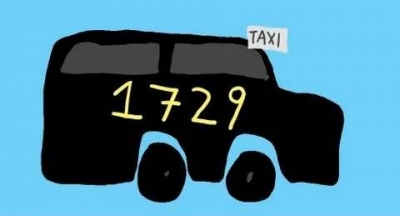
Are you aware of numbers that are called as taxicab numbers? The nth taxicab number is the smallest number representable in n different ways as a sum of two positive integer cubes. These numbers are also called as the Hardy-Ramanujan number. The name taxicab numbers, in fact is derived from a story told about Indian mathematician Srinivasa Ramanujan by English mathematician GH Hardy. Here is the story, as told by Hardy I remember once going to see him (Ramanujan) when he was lying ill at Putney. I had ridden in taxi-cab No. 1729, and remarked that the number seemed to be rather a dull one, and that I hoped it was not an unfavourable omen. “No,” he replied, “it is a very interesting number, it is the smallest number expressible as the sum of two [positive] cubes in two different ways.”
1729, naturally, is the most popular taxicab number. 1729 can be expressed as the sum of both 12^3 and 1^3 (1728+1) and as the sum of 10 and 9 (1000+729).
While the story involving Ramanujan made these numbers famous and also gave it its name. these numbers were actually known earlier. The first mention of this concept can be traced back to the 17th Century.
2 (1^3 + 1^3) is the first taxicab number and 1729 is the second. The numbers after 1729 have been found out using computers and six taxicab numbers are known so far.
Picture Credit : Google
